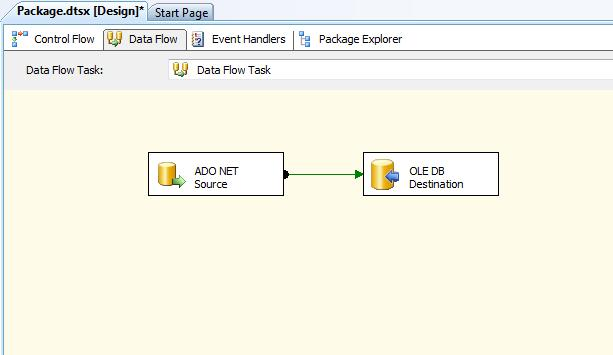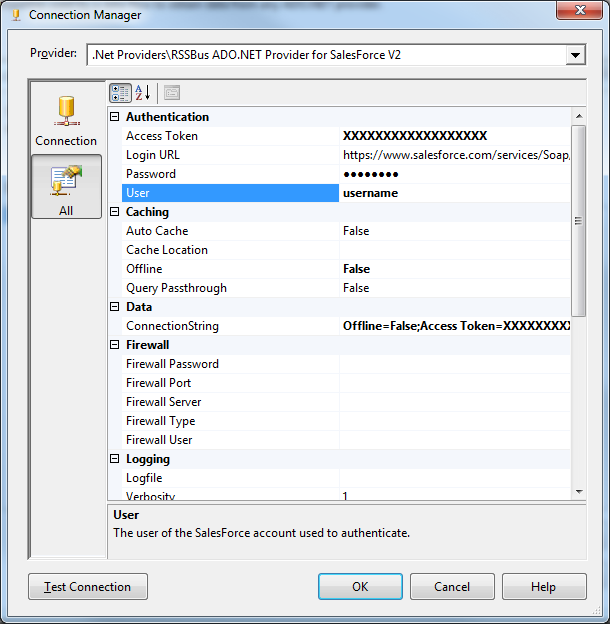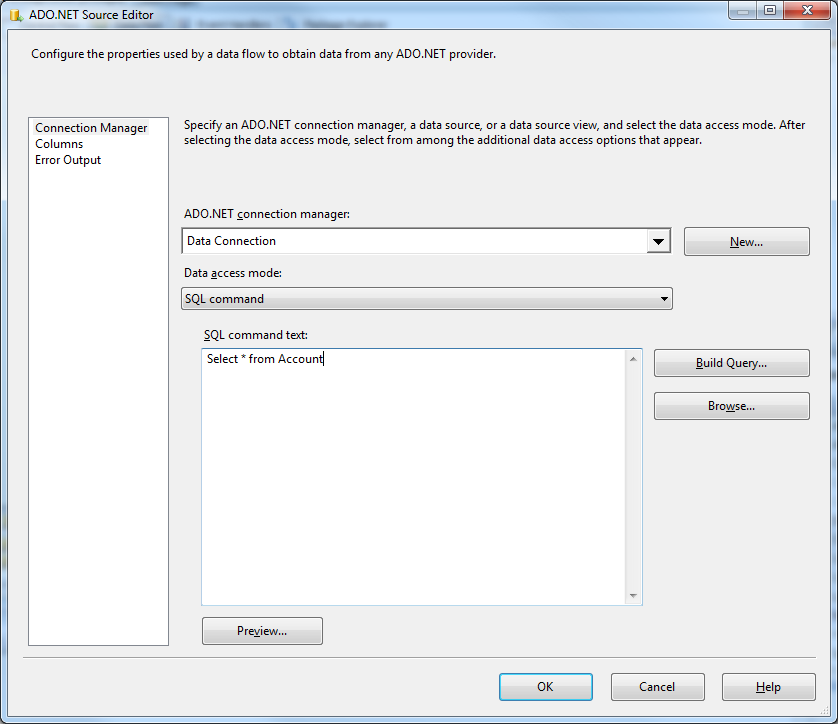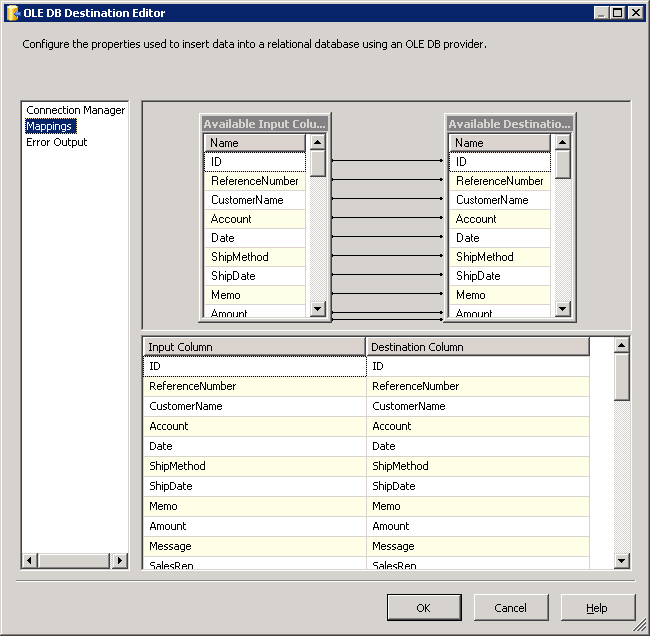Discover how a bimodal integration strategy can address the major data management challenges facing your organization today.
Get the Report →Back Up Azure Analysis Services data to SQL Server through SSIS
Effortlessly backup data to SQL Server by utilizing the CData ADO.NET Provider for Azure Analysis Services. In this article, we will employ an SSIS workflow to populate a database with Azure Analysis Services data data.
This article illustrates using the Azure Analysis Services ADO.NET Data Provider within a SQL Server SSIS workflow for the direct transfer of Azure Analysis Services data to a Microsoft SQL Server database. It's worth noting that the identical process detailed below is applicable to any CData ADO.NET Data Providers, enabling the direct connection of SQL Server with remote data through SSIS.
- Open Visual Studio and create a new Integration Services project.
- Add a new Data Flow task from the toolbox onto the Control Flow screen.
In the Data Flow screen, add an ADO.NET Source and an OLE DB Destination from the toolbox.
![The components used in the data task in this example.]()
- Add a new connection and select .NET Providers\CData ADO.NET Provider for Azure Analysis Services.
In the connection manager, enter the connection details for Azure Analysis Services data.
To connect to Azure Analysis Services, set the Url property to a valid server, for instance, asazure://southcentralus.asazure.windows.net/server, in addition to authenticating. Optionally, set Database to distinguish which Azure database on the server to connect to.
Azure Analysis Services uses the OAuth authentication standard. OAuth requires the authenticating user to interact with Azure Analysis Services using the browser. You can connect without setting any connection properties for your user credentials. See the Help documentation for more information.
![Connection properties in the Connection Manager dialog. (Salesforce is shown.)]()
Open the DataReader editor and set the following information:
- ADO.NET connection manager: In the Connection Managers menu, select the Data Connection you just created.
- Data access mode: Select 'SQL command'.
- SQL command text: In the DataReader Source editor, open the Component Properties tab and enter a SELECT command, such as the one below:
SELECT Country, Education FROM Customer WHERE Country = 'Australia'
![The connection and query specified in the source component properties. (Salesforce is shown.)]()
- Close the DataReader editor and drag the arrow below the DataReader Source to connect it to the OLE DB Destination.
Open the OLE DB Destination and enter the following information in the Destination Component Editor.
- Connection manager: Add a new connection. Enter your server and database information here. In this example, SQLExpress is running on a separate machine.
- Data access mode: Set your data access mode to "table or view" and select the table or view to populate in your database.
Configure any properties you wish on the Mappings screen.
![Input and destination columns in the OLE DB Destination Editor.]()
- Close the OLE DB Destination Editor and run the project. After the SSIS task has finished executing, your database will be populated with data obtained from Azure Analysis Services data.










